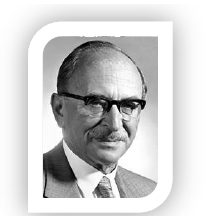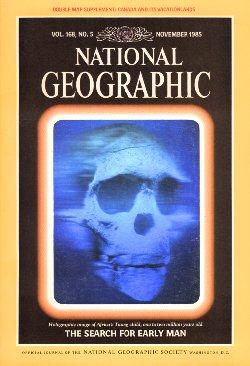a. Dennis Gabor
A hologram is a three-dimensional representation of an object. Holography began in 1947, when the British-Hungarian scientist Dennis Gabor developed the theory of holography while working to improve the electron microscope. Gabor chose the name “hologram” for his new technique, from the Greek words “holos” meaning “whole,” and “gramma” meaning “message”.
He received the Nobel Prize in Physics in 1971 for his research because he proved that the interference pattern of an object containing information about its position in space and that it was therefore possible, from this reason, to reconstruct the 3D image. But the development of this technique has been hampered at the time because light sources available were not truly “coherent”.
It was not until 13 years later in 1960 was invented the LASER (Light Amplification by Simulated Emission of Radiation), which is the purest and more coherent light at this time. The project of Gabor can be developed and the revolution can begin…
Source : American Institute of Physic; Denis Gabor 1975
Denis Gabor biography (Nobel Prize of Physics in 1972):
Dennis Gabor was born in Budapest, Hungary, June 5, 1900. He is a son of a director of a mineral company. This is the age of 15 when his love of physics seems appear. Attracted and fascinated by the Abbe theory of microscopy and by that of the Gabriel Lippmann color photography, he built a house and laboratory begins to experiment with X-rays and radioactivity.
Graduated from the “Technische Hochschule” Berlin in 1924, three years later, he obtained his PhD in Electrical Engineering. His thesis is based on the development of the first high-speed oscillograph cathode ray. At that time Berlin is the capital of the physical world, the largest such gathering Einstein, Plank…
He joined Siemens and Halske AG in 1927 where he developed the lamp high pressure mercury quartz and “Molybdenum tape seal.” Following the coming to power of Hitler in 1933, Dennis Gabor left Germany for England. British company Thomson-Houston Co. recruited him as an inventor. Thanks to his talent, he finds his place in society, in the research laboratory where he remained until 1948. It develops, moreover, a system of stereoscopic cinematography and begins experiments on holography basics, then called “wavefront reconstruction”.
On 1 January 1949, he joined the “Imperial College of Science and Technology” in London, as reader electronics. He remained there until his retirement in 1967 as professor of physics in applied electronics. He remains in contact with the college as “Senior Research Fellow” and collaborates with other doctoral students. It focuses on many challenges such as holographic microscope, a new spectroscope, an analog computer, a slim TV, a thermionic converter. This theoretical work related to the theory of communication, plasma theory, theory and magnetron schema merging.
He also collaborates with Dr. Peter Goldmark, father of color TV and president of CBS Laboratories Stamford, on many patterns of communication and presentation. Along with his work, he found a new passion: questioning the future of industrial civilization. Convinced that the inventive minds should consider social inventions as their first priority, he published three books: “Inventing the Future” (1963), “Innovation”, “The Mature Society” (1972).
Dennis Gabor was his whole life was an avant-garde, someone convinced that the impossible was possible. Precursor in many fields he has to contribute its talent engineering in service today has many causes that definitely changed our everyday lives. Innovation as a driver of a company at the time is now many issues that falls within the sphere of ethics. However, he was able to bring the world a new form of communication based on the effects of light: holography.
b. Emmeth Upatnieks Leith & Juris
1962 mark a turning point in the development of holograms. Emmeth Upatnieks Leith and Juris from the University of Michigan have imagined, thanks to their research on the radar that holography could be used as a medium of three-dimensional visualization. Based on the work of Gabor, they decided to amalgamate his theory with laser technology, while adding a technique developed by them even based on the offset axes (research on radar).
The result was final in 1964 they are creating the first hologram from three-dimensional object. These transmission holograms give him very clear and realistic, but they are visible only by the light of a laser. This discovery led international echo standardizes the process of creating holographic research and open a larger number of people.
Sources (1): Leith Upatnieks and prepare to shoot a hologram transmission using the technique “off-axis” they developed while working on the radar.
(Photo by Fritz Goro for Life magazine, 1967)
c. Dr. Yuri Denisyuk
In 1962, Dr. Yuri Denisyuk(2) attempts to combine holography with the work performed by the Gabriel Lippmann color photography. This work led to look at a hologram without turning on the laser, which later became a major asset. He invented the technique of the reflection hologram visible by white light (coherent).
“Train and Bird” is the first hologram ever made with a laser using the off-axis technique. This pioneer image was produced in 1964 by Emmett Leith and Juris Upatnieks at the University of Michigan only four years after the invention of the laser
d. And now…
Since the first discovery of holography has these days, the technology remained in scientific laboratories. The first articles on the topic, dates from 1967 by the famous Scientific American or National Geographic.
The particularity of the reflection hologram which is visible by white light, was quickly adopted by many artists in a new form of expression. The effect of light and depth of the hologram gives the object a different identity that is called: holographic art.
It is through the many artists that holography will spread dramatically. In 1968, in Michigan, “Crambrook Academy of Art” organized the first exhibition of holographic art followed by a second in 1970 in New York. Holography then raises all the questions.
Since “Train and birds” in today holography has evolved and survey new areas, such as security ID cards, passports and blue card. Concerts are organized to revive those who once remembered for their artistic talents. Holograms are also used in the fashion industry or in a shop window of the brand “Empreinte” to promote underwear.
Tupac 2012: http://www.youtube.com/watch?v=TGbrFmPBV0Y
Kate Moss 2012: http://www.youtube.com/watch?v=Cou04-vOZx8&feature=fvwrel
Empreinte 2012: http://www.youtube.com/watch?v=2LTXZZuedxQ
The first credit cards to carry embossed holograms were produced by American Bank Note Company, New York, for MasterCard International, Inc. The 2-channel holograms were the widest distribution of holography in the world at that time.
The December 1988 National Geographic magazine featured the most ambitious hologram ever published in a large-circulation magazine. The entire cover was holographic: a globe on the front cover, 3-D type on the spine, and an advertisement on the back. The front-cover hologram was made using a pulsed laser with an exposure of about seven-billionths of a second.
1 http://inventions.lza.lv/proto.php?id=98
2 Source image : http://newsroom.spie.org/x3181.xml?highlight=x509







